Free Shipping within USA
Free Shipping within USA
October 05, 2016


September 25, 2016
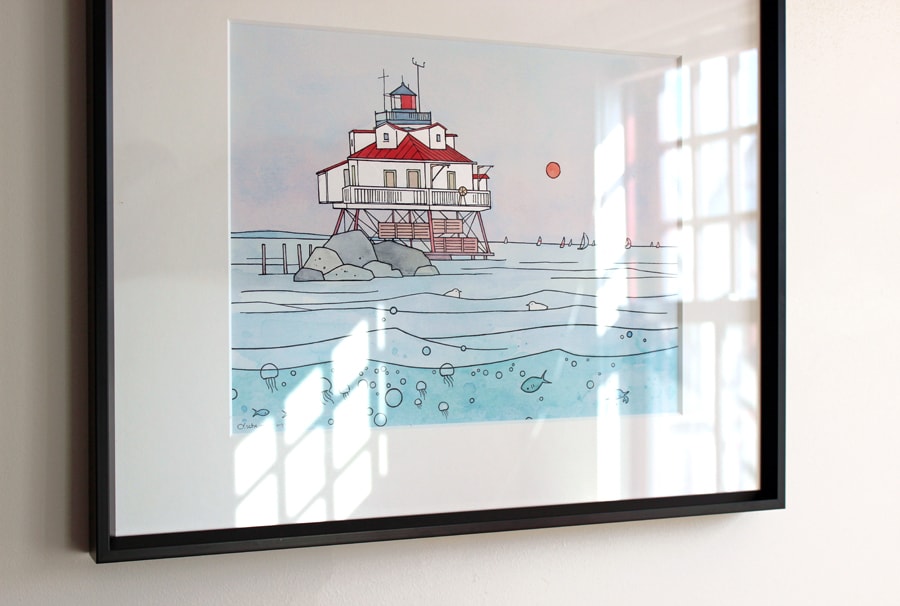
September 20, 2016


 A cute Owls Magnet Set featuring illustrations from my 100 owls project. The magnets are topped with a glass dome, which you can see a bit better in this shot.
A cute Owls Magnet Set featuring illustrations from my 100 owls project. The magnets are topped with a glass dome, which you can see a bit better in this shot.

September 16, 2016
Narwhals are a type of whale, most closely related to belugas. They live in the Arctic by the ice cap and sea ice, and are one of the few whale species that live year round there. You are probably already aware of their unique feature, a single spiraled tusk that sticks out of the front of their head (like a unicorn!). Narwhals are a bit of a mystery to us - they spend most of their time under sea ice, making them a little hard to study and observe.
Below are some fun narwhal facts (for kids or you kids at heart!) illustrated with some of my drawings and doodles.
Top image: 3 narwhals swimming under sea ice in the Arctic. Watercolor and India Ink.
The word Narwhal has its origins in Old Norse and Scandinavian languages. The Old Norse word nāhvalr is translated as corpse whale, named because the coloring of narwhals reminded sailors of a drowned body. Creepy!
The Inuit word for Narwhal is a little more poetic; Qilalugaq gernertaq is translated as “the one point to the sky". Named for the behavior of pointing their tusks towards the sky as they come up for air at holes in the polar ice pack.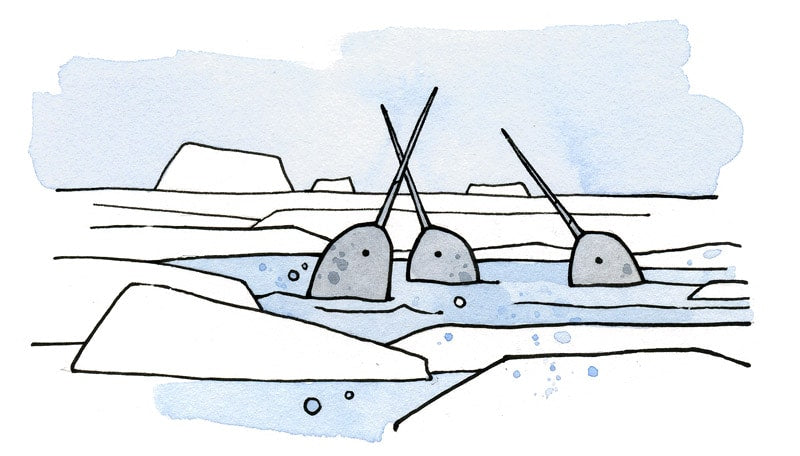
Their scientific name, Monodon monceros, is Greek in origin. It means one-tooth one-horn (unicorn).
Narwhals change colors as they age. Babies are a blueish grey. Juveniles are a darker blueish black. As they become adults their skin changes to a blotchy gray. As they age they become lighter and older narwhals are almost completely white.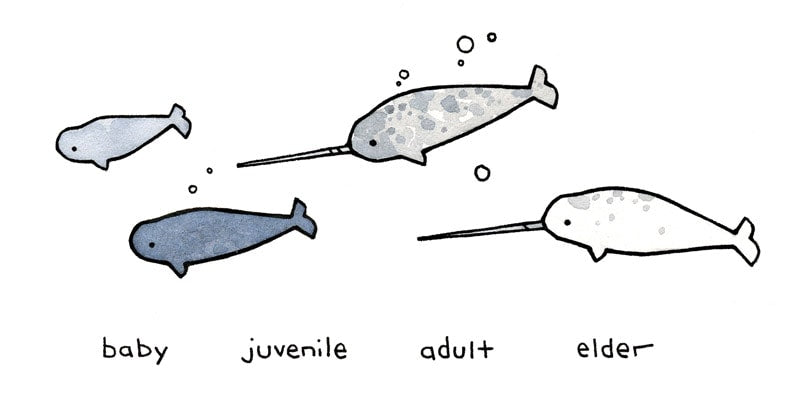
Narwhals can live to around 50 years old.
Narwhals live in pods, usually a group of 20 or less narwhals. However during summer migration these pods come together and form "super pods" which can contain hundreds or even over a thousand narwhals.
Narwhals eat shrimp, squid, and fish such as halibut and cod.
Narwhals are very vocal, they communicate with clicks, squeals, and other noises - similar to dolphins.
The Narwhal's tusk is actually a tooth that grows out of the jaw and through the upper lip. It grows in a spiral and can reach almost 9 feet.
Male narwhals have tusks. The occasional female will have a tusk, but most don't.
Occasionally a male narwhal will have 2 tusks.
Whats are the narwhal's tusk for? It's a bit of a mystery, but it is probably used to attract mates and possibly to sometimes to fight over mates. The tusk also contains nerve endings which can help the narwhal sense things about its surroundings. The narwhal's tusk probably has multiple purposes.
Sources: World Wildlife Fund, WWF Canada, Encyclopedia of Life, National Marine Mammal Labratory - NOAA, Encyclopedia Britannica, The American Society of Mammalogists, Merriam-Webster
Read More Illustrated Animal Facts
--------------------------------------------------------------------------
In the Shop
September 13, 2016
September 10, 2016
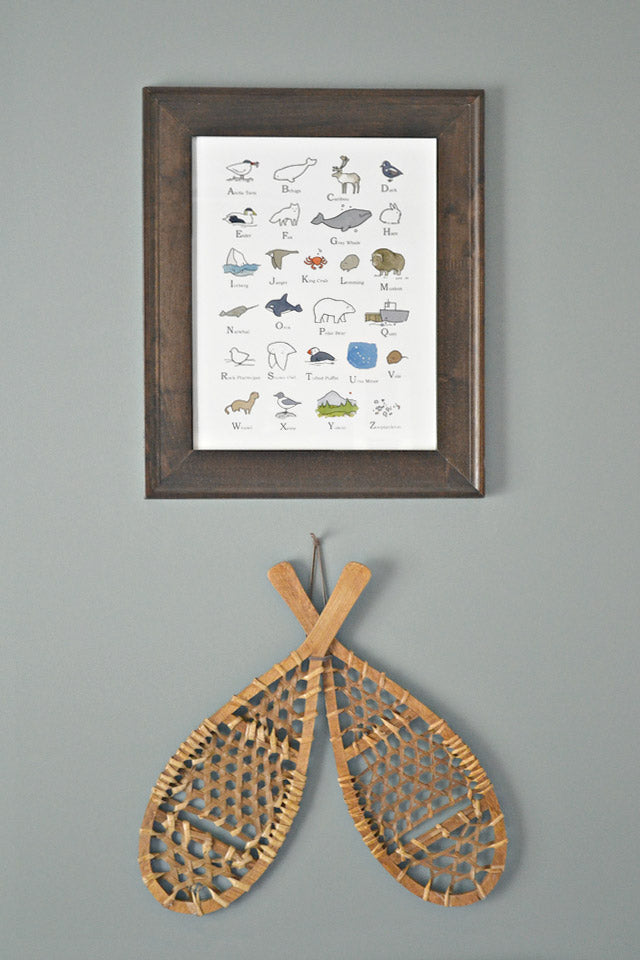

 You can find 11x14" and 13x19" prints of my Arctic alphabet in my shop here: Illustrated Arctic Alphabet Print
You can find 11x14" and 13x19" prints of my Arctic alphabet in my shop here: Illustrated Arctic Alphabet Print 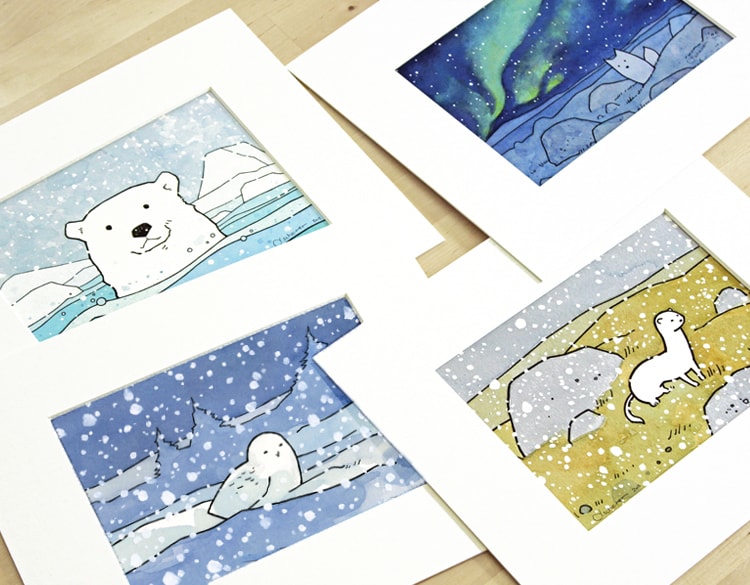
July 16, 2016

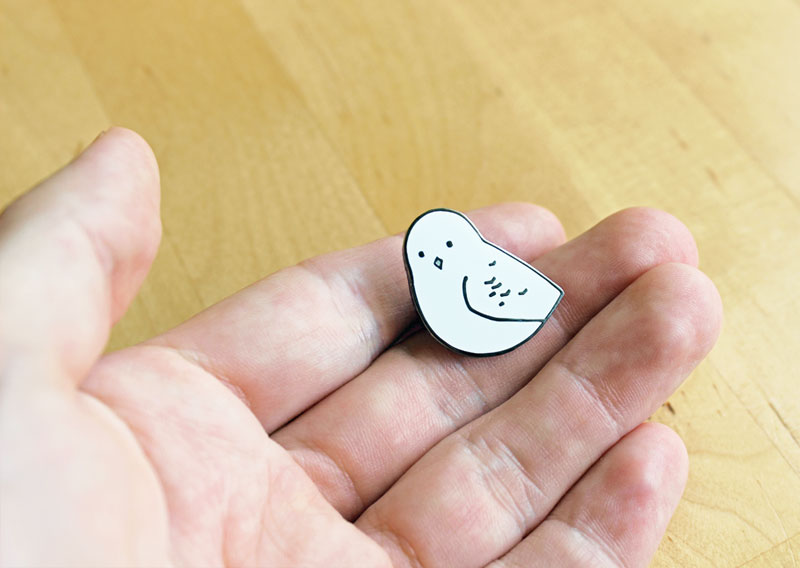

A fun pin for your lapel, backpack, or bag!
My Snowy Owl Pins available to buy here: https://www.studiotuesday.com/products/snowy-owl-enamel-pin
March 10, 2016
Another new illustration in my dinosaur series. This one is a colorful Stegosaurus in a Jurassic landscape drawn in whimsical black lines. Other details include an orange sun, a fallen log at the water's edge, conifers, and more Stegosaurus in the distance.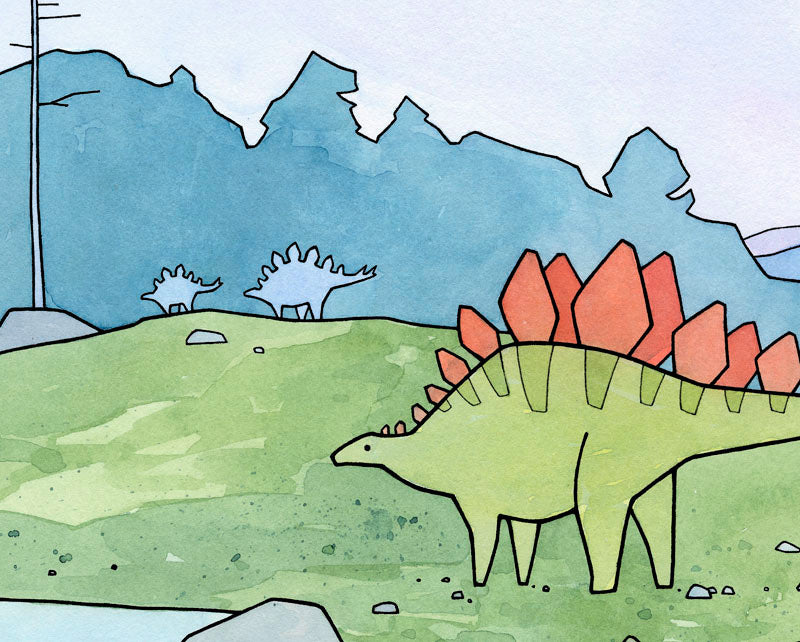

Above is a 11x14" Print, now available in the shop, along with some other sizes. Link below!
Stegosaurus Art Print
March 03, 2016
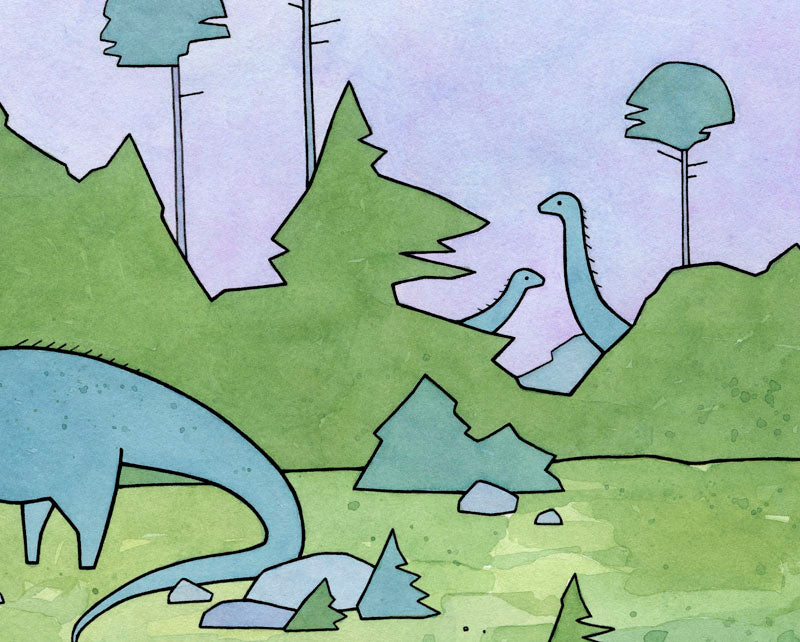

January 20, 2016

Sometimes these drawings seem to take a lot of work, studying the animals and figuring out how to convey them in simple lines and shapes. Sometimes it takes multiple sketches, altering and redoing drawings (this Pine Marten comes to mind) and sometimes, like this otter, they come together easily in one quick go.
I have prints up in the shop, which you can find here: River Otter Art Print
While I'm on the subject I thought I'd talk about some of the otter art I enjoy. Below are a few of my favorites. Included are different otter species, and a range of styles from different artists.

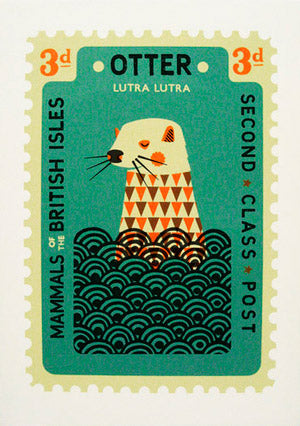

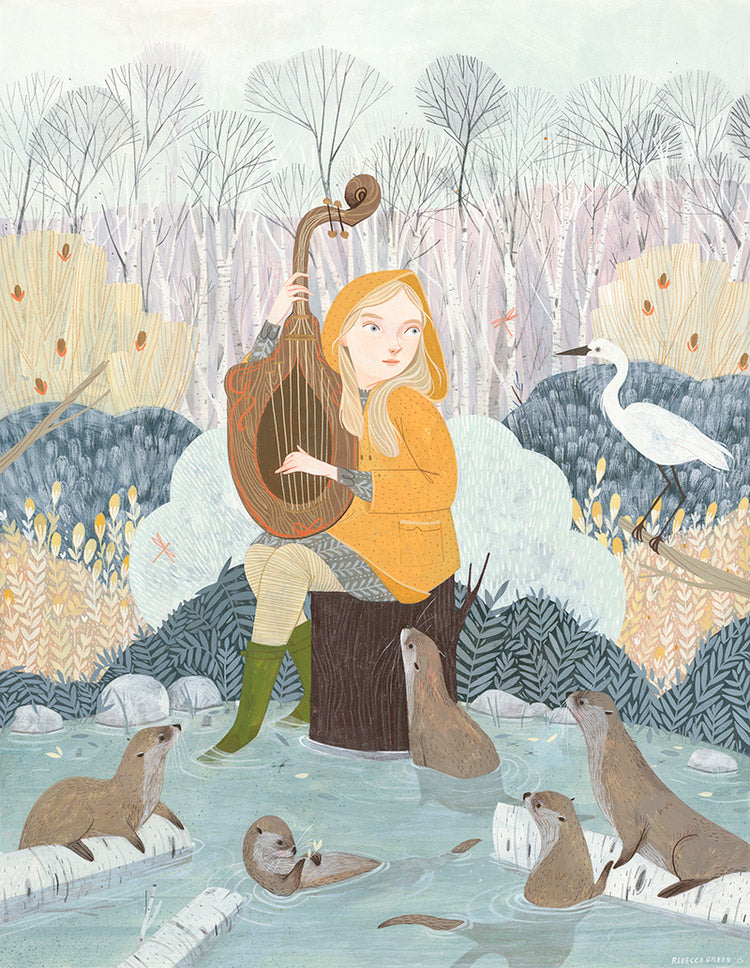
"Along the Water's Edge" by Rebecca Green Gouache and Colored Pencil
Rebecca Green's whimsical narrative paintings often feature animals and interesting girl characters. Along the Water's Edge is an imaginative scene that features one such character, along with swimming river otters, and an egret. I love the soft muted colors in her work. I'm also a sucker for interesting texture and keep coming back to stare at the rich layers, marks, and brushstrokes in her paintings. You can find more of her art here: myblankpaper.com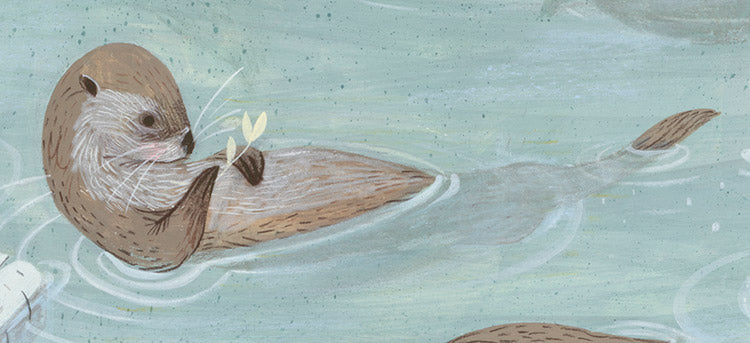
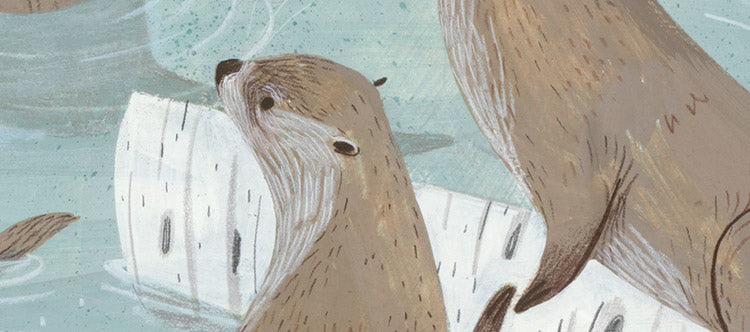

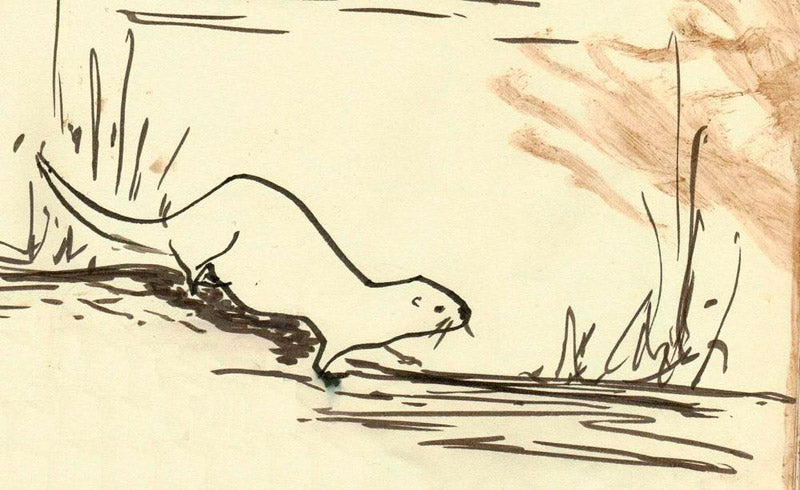
August 14, 2015
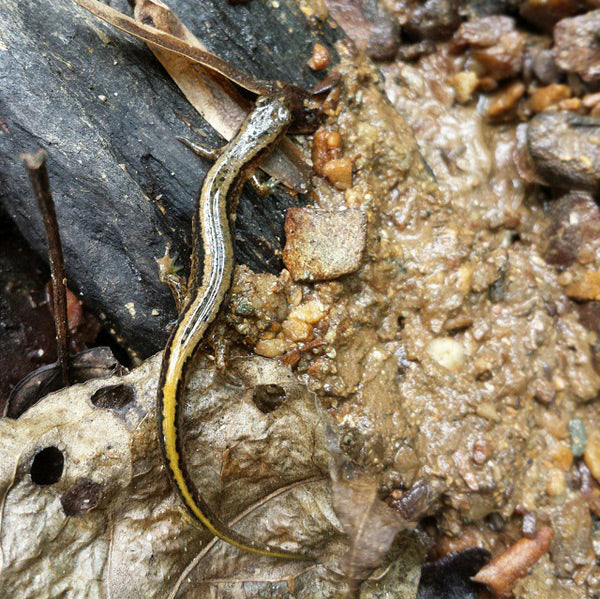
Salamander hunting in the woods nearby my house. I found this salamander, and several more like it, in a shallow creek under rocks. From looking through my field guides, I think it is a Northern Two-Lined Salamander.
Below, a fun little labeled chart I drew of some various North American salamanders. Its measures 8x10 inches, drawn in India ink and watercolors.


February 21, 2015

